In Photos: Steps to a Supersonic Skydive
Space Jump

On Oct. 8, 2012, Felix Baumgartner will attempt the world's highest skydive ever, leaping from 23 miles above the Earth in a supersonic plunge. The supersonic mission has been dubbed Red Bull Stratos, as Red Bull is sponsoring the daredevil and his leap. (Here, Baumgartner shows a piece of the balloon material during a training session Feb. 23, 2012.)
The Daredevil's Plan
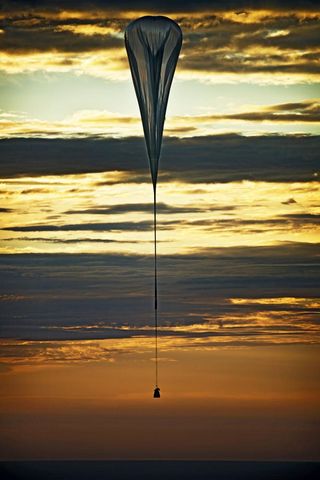
The plan: A helium balloon (shown here during a July 25, 2012, test flight) will lift off in Roswell, N.M., carrying a custom-built capsule, carrying Baumgartner, to an altitude of 120,000 feet (36,576 meters). Once there, the Austrian daredevil will step out of the capsule and into the void.
Bum Landing
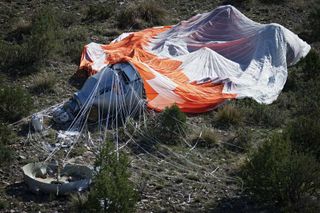
On July 25, 2012 during a practice jump from 97,146 feet (29,610 m), Baumgartner's 2,900-pound (1,315 kilograms) capsule was damaged in a hard landing, forcing a delay while repairs were made. On Sept. 24, officials with Red Bull Stratos declared the capsule was ready to launch Oct. 8.
Parachute Down
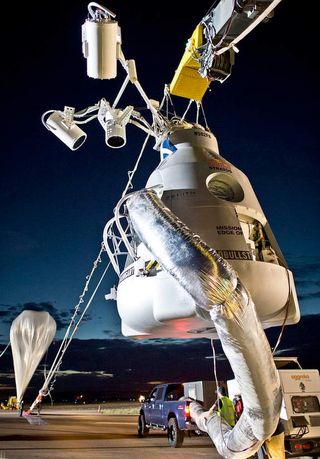
The capsule seen at the flight line during the second manned test flight for Red Bull Stratos in Roswell, N.M., on July 25, 2012.
Breaking Kittinger Record?
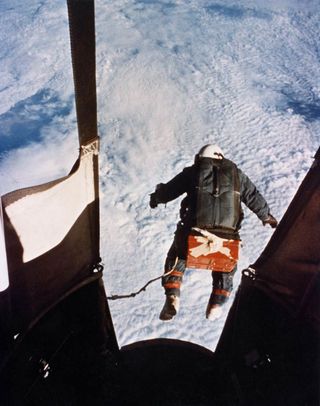
The current record for world's highest skydive was set in 1960 when U.S. Air Force Captain Joe Kittinger leaped toward Earth from an altitude of 102,800 feet (31,333 m). (Kittinger serves as an adviser for Baumgartner's mission.)
Breaking the Sound Barrier
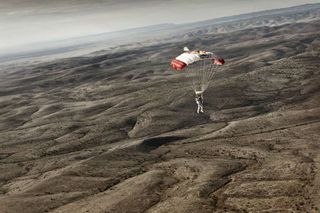
If Baumgartner succeeds on Oct. 8, he will break not only that mark but also the sound barrier, becoming the first skydiver ever to fall at supersonic speeds. During the July 25, 2012 jump, Baumgartner's top freefall speed was 537 mph (864 kph) — about as fast as a commercial airliner. (Baumgartner shown here on July 25 during his freefall into the desert.)
Test Jump
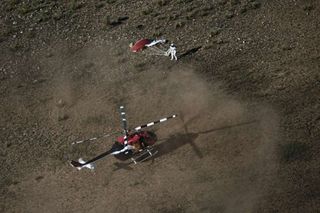
Pilot Felix Baumgartner of Austria lands in the desert during the second manned test flight for Red Bull Stratos in Roswell, N.M., on July 25, 2012.
Sign up for the Live Science daily newsletter now
Get the world’s most fascinating discoveries delivered straight to your inbox.
Low Pressure
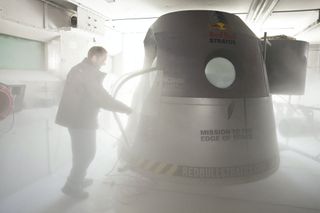
A crewmember positions the space capsule of the Red Bull Stratos mission in the pressure chamber at Brooks Air Force Base in San Antonio, Texas, on Sept. 24, 2012. Air pressure drops as one goes higher in altitude.
Gorgeous Setting
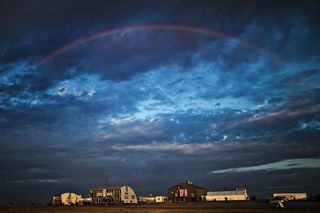
Mission control seen during the second manned test flight for Red Bull Stratos in Roswell, N.M. (Photo take July 24, 2012.)
Tall Tale
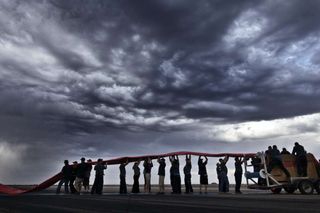
Crewmembers put the balloon into its container during Baumgartner's second manned test flight for Red Bull Stratos in Roswell, N.M., on July 23, 2012. The helium balloon rises as tall as a skyscraper, according to a Reuters report.
Space Jump Suit
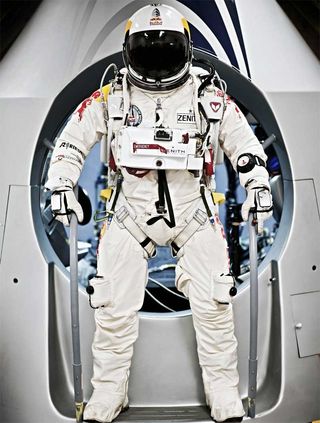
Baumgartner wearing his full-pressure suit and helmet on Feb. 23, 2012. The suit is designed to provide protection from temperatures of 100 degrees F to minus 90 degrees F (38 C to minus 68 C). Pressurized to 3.5 pounds per square inch (roughly the atmospheric pressure at 35,000 feet), the suit will protect Baumgartner from decompression sickness, also called the bends.
Jeanna Bryner is managing editor of Scientific American. Previously she was editor in chief of Live Science and, prior to that, an editor at Scholastic's Science World magazine. Bryner has an English degree from Salisbury University, a master's degree in biogeochemistry and environmental sciences from the University of Maryland and a graduate science journalism degree from New York University. She has worked as a biologist in Florida, where she monitored wetlands and did field surveys for endangered species, including the gorgeous Florida Scrub Jay. She also received an ocean sciences journalism fellowship from the Woods Hole Oceanographic Institution. She is a firm believer that science is for everyone and that just about everything can be viewed through the lens of science.











